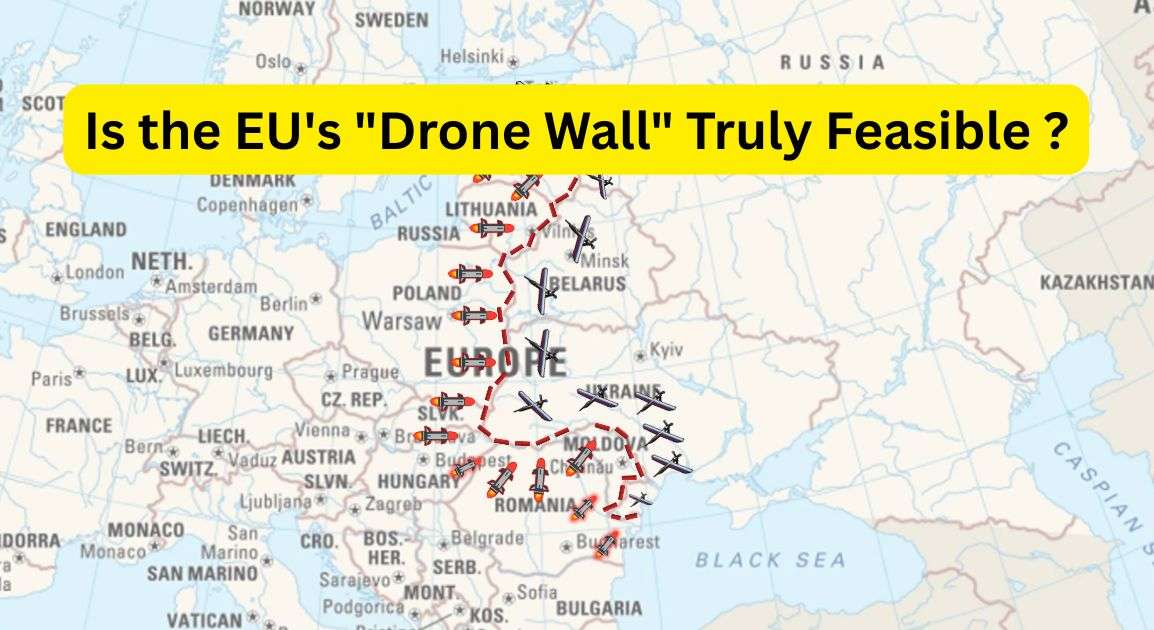The European Commission proposed to broaden its “drone wall” initiative, which was first intended to guard the EU’s eastern border, into the “European Drone Defence Initiative” a program that will cover the entire continent.
Originally, the concept emerged after an incident in September when over 20 Russian drones entered Polish airspace, exposing Europe’s vulnerability. During the ensuing week, drone incursions over German and Danish airspace gave the proposition more urgency. The initial idea was to use an integrated system of sensors, jamming, and countermeasures to strengthen the EU’s eastern border.
However, southwestern and western member states protested, stating that the proposal is narrow and leaves large parts of Europe exposed. In reaction, the European Commission decided to rebrand the proposal into the “European Drone Defence Initiative”, to be covered in its upcoming defence readiness roadmap.
Challenges
Political challenges
The biggest challenge in the initiative lies in its political and governance, some member states, such as Germany and France, want to keep control of their own defence industries. At the same time, Eastern European countries like Poland, Finland, and the Baltic want the EU to develop a unified defence system, to be better funded and coordinated.
Technical challenges
Creating a drone network to cover the continent is still a complex issue; it requires cross-border coordination from radar, jammers, sensors, and counter-drone weapons. Experts believe that building a completely functional system will take many years to develop and functionalize fully.
Funding challenges
While the European Commission has yet to disclose the cost of the plan, the geopolitical consultancy RANE (Risk Assistance Network + Exchange) indicated it could generate billions of Euros in orders. However, without broad support from the EU’s member states, the proposal may not receive the funding from the EU budget necessary to implement the plan. There is no plan specifying who will fund the program and how the cost will be distributed are unclear.
Cost imbalance
It is not viable to shoot down cheap drones with expensive missiles; EU defence officials warn that a “10,000 –euro drone shot down with million-euro missile” is not sustainable. So, the EU must develop a cheaper and faster option.
Industrial competitions
Many European defence companies like Rheinmetall and Helsing are developing their ownanti-drone system, which many countries have started purchasing. However, experts warn that each nations purchase or develops its own independent system. Europe may waste money and have an incompatible system.
Additionally, experts caution that this is not an effort with a short-term time span. The system’s implementation could take years, given the technical, political, and financial barriers. While the goal is to make European skies safer, achieving such cohesion will require cooperation and consistent funding.
Coordination between NATO and the EU
The EU and NATO intend to work together closely on this new drone defence strategy. The EU will provide finance, regulation, and coordination among the member states; NATO will provide military capabilities in the form of operational equipment and defence support. The aim is to create the best ability for the systems on both sides to fit together smoothly and connect to improve Europe’s air defence. But officials point out that it’s both politically and technically challenging to link two organizations because they must agree on common standards and avoid overlapping efforts.
Looking to the future
Europe is taking the growing drone threat seriously, as seen by its efforts to enhance the air defence network. Although the proposal faces significant political, financial, and technical problems. Without clear agreement among EU countries, effective cooperation with NATO, and faster funding decisions, the proposal may struggle to get away from the planning stage. For the time being the notion of drone wall remains an initiative in development, reflecting both Europe’s urgency and its difficulties in turning defence ambitions into action.





